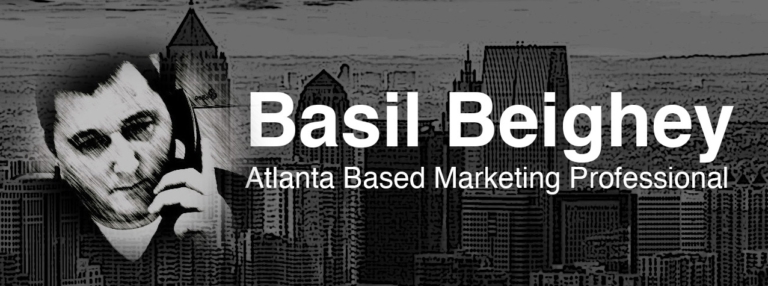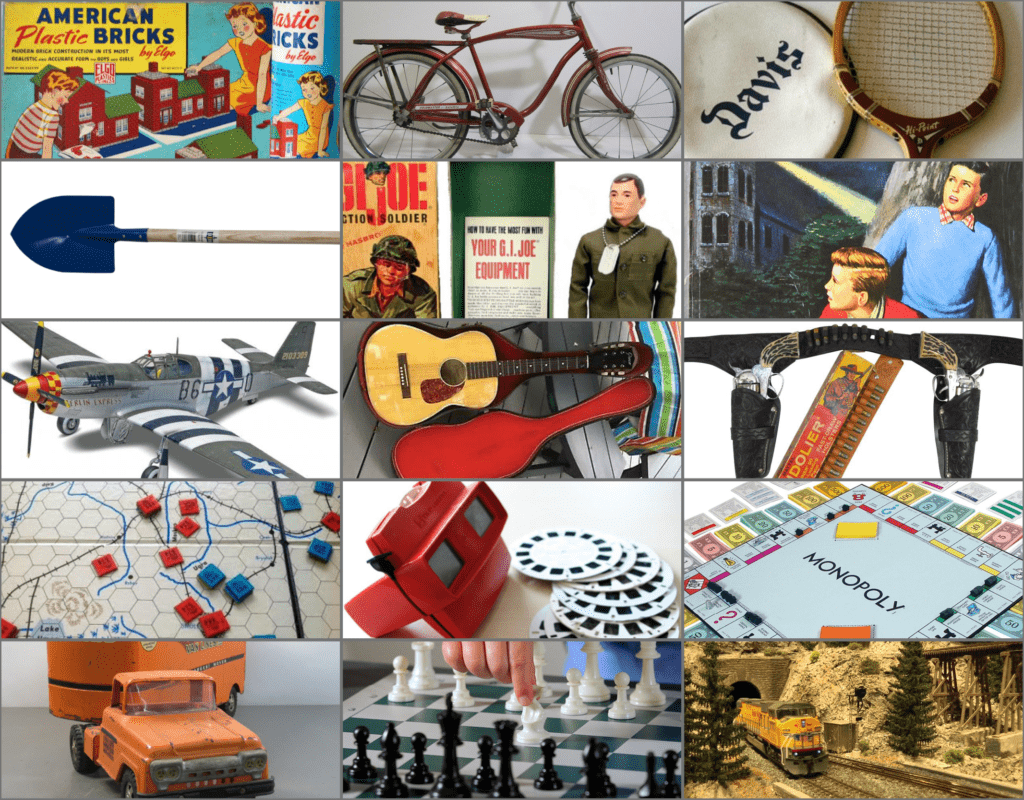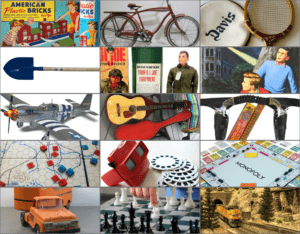One big advantage children have over adults is that they have a lot of discretionary time. They have lots of time to think and play. This is the most creative period of our lives. When your mind is open to new ideas, when your mind is uncluttered with preconceptions when your mind is free to wander and free associate, creativity ensues. Playing with these toys expanded my knowledge and improved my creativity. These fifteen toys had a lasting impact on my life, they taught me things and made me think.
1 – Tonka Trucks
I grew up in the first house built in a new subdivision. From age 4 to age 8, I watched something like fifteen houses being built around me. That included grading, framing, plumbing, paving, landscaping, and finishing work. The most exciting days of my young life were the days when contractors “broke ground” for a new house. Wow, that was a big day! It was like the circus came to town. The grading contractor would arrive, usually with a bulldozer and a track loader to dig the foundation and prepare the site. Shortly after, a backhoe would arrive to trench the plumbing lines and dig holes for the septic system. Dump trucks would bring fill dirt and crushed stones, flatbed trucks would bring roofing materials, cranes would sometimes be used to set heavy objects, and cement mixers would arrive to pour the concrete. As a young boy, I was mesmerized by the power of heavy equipment. When the trucks rolled in, kids from the surrounding neighborhoods would follow to watch the action. We would jockey for the best vantage points. We would creep in as close as possible to deep holes and dangerous equipment. I can still vividly remember machinery operators yelling, “Get those God damn kids away from there!” when we got too close.

Watching the construction imbued me with a love for “heavy equipment.” I asked for toy trucks and machinery at every birthday and Christmas. My first Tonka truck was the red dump truck pictured in this video at minute 2:36. I later received a cement mixer, another dump truck, a firetruck, a crane, a bulldozer, and a loader. By age six, I had a small fleet of trucks. And when I got together with a friend, and we combined our fleets, we had all the trucks we needed to build imaginary subdivisions.
In 1965, things were different for kids. There was no such thing as a “helicopter parent.” My mother would dress us, give us breakfast, and then send us outside to play until lunch. As we lived in a new subdivision, there was no shortage of freshly graded dirt and sand to play in. Using our trucks, we would mimic what we saw the real equipment operators doing. We would build roads and dig foundations, we’d haul in, or haul away fill, and invent scenarios, and emergencies for our trucks to resolve. Playing with Tonka trucks forced you to think about the timeline of a construction site and reenacting what you saw the real contractors doing burned the procedures into your memory.
Somewhere along the way, my trucks disappeared. As I advanced into my teens, I lost interest in them and lost track of what happened to them. I suspect my parents sold them in garage sales or gave them away. Today, all I’m left with is the vivid memory of how much I loved playing with them in the dirt, building my imagery subdivisions.
2 – 1964 GI Joe
Today, it seems every popular movie and TV show spawns new “action figures.” Walk into any toy store and they litter the walls. But in 1964, there was only one, GI Joe. When GI Joe was introduced, it changed the toy industry forever. Previous to GI Joe, “only girls played with dolls,” or at least, that’s what your father told you. The word “action figure” didn’t exist. Any small humanoid figure with interchangeable clothing was considered a “doll.”
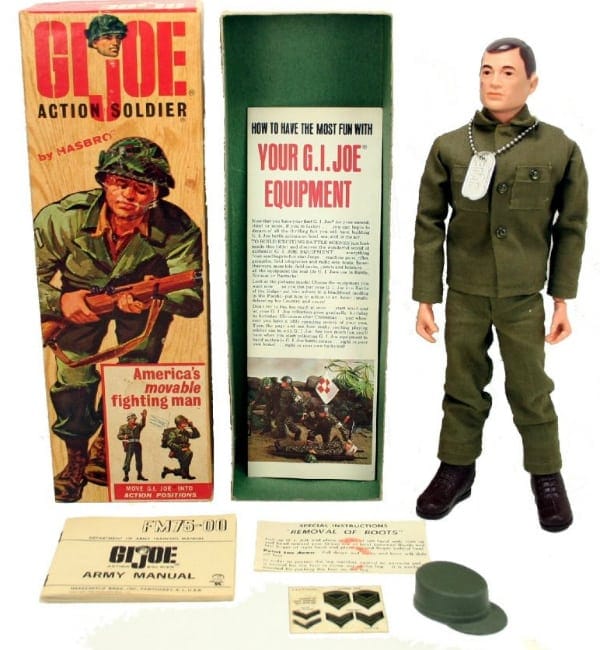
But the appeal of GI Joe was too strong for young boys. While girls imagined nurturing baby dolls, boys imagined combat, adventure, and an idealized vision of masculinity. In post-WWII America, many movies and TV shows glorified and simplified war. We were the “good guys,” we won, and the world was better for it. For young boys, GI Joe was a way to imagine you were part of that.
Unlike most dolls of the era, and other small toy soldiers, GI Joe was big, 12 inches high, and had 21 points of articulation. You could move his body parts into many positions. This enabled him to hold weapons and mimic combat positions.
From a money-making standpoint, the genius of GI Joe was the seemingly endless amount of accessories you could purchase. The soldier came in four versions, Army, Navy, Air Force, and Marine. When you opened the box, what you got was the action figure, a catalog listing accessories, a poster showing all four versions, a dog tag, and the standard uniform of that branch of the service. Everything else was extra, even a rifle. When I got mine, the only one left on the shelf was an Air Force model sporting an orange jumpsuit and black boots. But at every birthday and Christmas, the accessories rolled in until I had a “footlocker” full of uniforms and gear.
GI Joe triggered the six-year-old imagination. At that age, GI Joe was the closest I was going to get to a scuba suit, an automatic rifle, or even jungle survival training. It was easy to imagine a jungle under the dining room table with the sea touching the land where the hardwood met the carpet. I set up many an encampment under the table. When my friends came over with their gear, we would compare outfits, rifles, and other accessories. Like any collectible, you always wanted more.
In the end, GI Joe caused me to think about the armed services, and the gear they used, and even to imagine what it may be like to serve. It planted a seed of desire to know more about military tactics, strategy, history, and equipment. Later, in high school, I would dig deeper into military history. The more I learned, the more I wanted to learn. Today military history is a passion of mine that started with GI Joe.
3 – GAF View Master Stereo Viewer
When I was young, there was no cable TV and our antenna only received two networks, NBC and CBS. In those days the programming wasn’t great. Usually news, soap operas, game shows, and nightly situation comedies – all in “black and white.” So my view of the world was somewhat restricted.

Then, on one birthday, I received a GAF View Master Stereo Viewer. Wow! All of a sudden, you could view slides of exotic places and things in color and even 3D! That was huge! The color and 3D made the scenes really come to life. Soon after, I became obsessed with slides of Africa, wild animals, and, well … Disneyland. For a five-year-old living in western Pennsylvania, Disneyland may as well have been the moon. That’s how likely I felt I was to ever get there. But there it was on the stereo viewer! I began to collect slides of every ride in the Magic Kingdom. Watching the slides, I’d imagine what the ride would be like in “real life.” I especially loved watching the slides of the Jungle Cruise. The animatronic animals and native people seemed so real. I long for the day when I could experience the ride.
The Stereo Viewer allowed you to experience an adventure from your bedroom. Watching the 3D color slides of far-a-way places like Japan, Europe, Africa, and even Disneyland imbued me with a desire to travel and see these things in person. It planted a seed of desire for adventure that’s never left me.
4 – American Building Bricks
Before Legos, there were American Building Bricks. Like Legos, they snapped together to build things. Unlike Legos, they were specifically designed for building brick structures. A typical “can” of bricks came with numerous red bricks, white “foundation bricks,” green roofing panels, and a wide variety of doors and windows that actually opened.

Inside each can was a color direction sheet featuring different structures you could build using the contents of the can. Unfortunately, only the simplest designs could be built with one can of bricks. Most of the bigger structures required additional cans of bricks. No matter how many bricks you had, it was never enough. Inevitably, whatever you set out to build, you’d always run out of material, … unless you planned ahead.
Building bricks taught you a few things. First, you had to consider structural stability. Building bricks didn’t snap together as tight as Legos. So it was imperative that you “interlaced” your bricks to form strong walls and joints. Second, good engineering is minimalist. In order to build the biggest building you could, you had to make decisions regarding what was essential. Building foundations stronger or wider than necessary robbed limited resources that could be better used elsewhere. A good bridge is “just strong enough” to hold the maximum anticipated load, otherwise, you’re wasting resources. Third, you began to pay attention to architecture, balance, symmetry, and design. Ultimately, you wanted your structures to resemble real structures. That necessitated you pay attention to details of real buildings.
5 – Mattel Shootin’ Shell .45
The first time I caught a glimpse of my Shootin’ Shell .45s, I literally thought they were real handguns. My parents obviously had a disagreement on the birthday gift and put them into “deep storage,” hidden at the back of the top shelf of my closet. At the time, I was five years old and my parents didn’t think I had the ingenuity to get to the back of the top shelf of my closet. I did. Standing on top of my clothes hamper, I spied them. The outside of the box was clearly marketed “Mattel,” a label I was very familiar with. I shut the door of my bedroom and secretly retrieved the box.
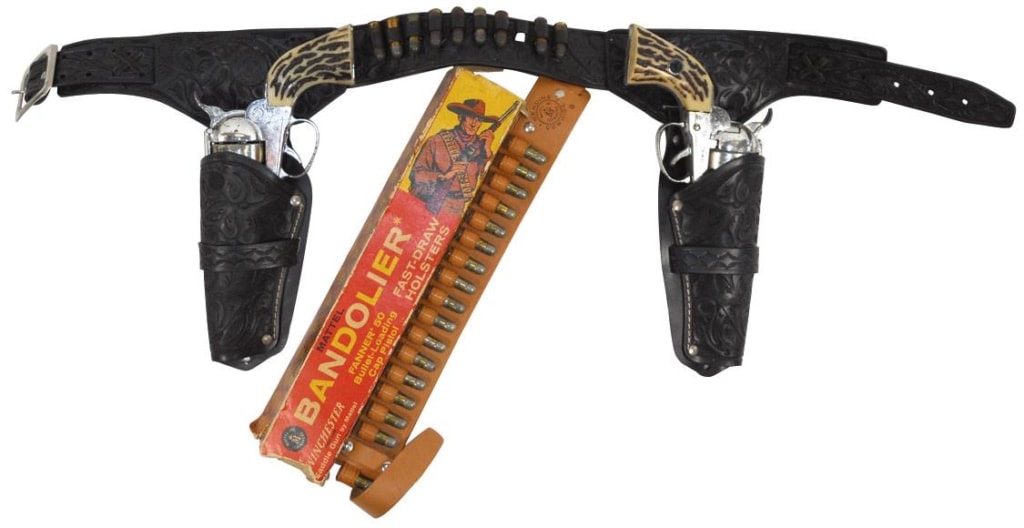
When I saw the pistols, my heart raced. To this day, they were the most realistic toy handguns I have ever seen. I began to play with them in secret, taking them down and putting them back daily. The problem was, I wanted to use the holster which was “zip-tied” to the box. The only solution was to tell my parents I had found the stash and hoped for the best. Eventually, they let me have the present, under the condition I understand it was part of my birthday haul.
The Shootin’ Shell .45 was an almost exact replica of a Colt .45 caliber revolver. It was the same size, it had a revolving cylinder, a loading gate for inserting the shells, and a spring-loaded bullet extractor along the barrel. The pistol was “double-action” which meant you could either pull back the hammer and take dead aim or simply pull the trigger without cocking the hammer to revolve the cylinder and shoot. The handgun also had the designation of “Fanner,” which meant you could hold the trigger in with one hand and rapid-fire the pistol by fanning the hammer with the other – just like on the TV westerns. Wow!
The Shootin’ Shell .45 shot plastic bullets. The shell portion of the bullet had a spring in it. You then snapped the plastic slug into the shell to form a complete cartridge. To complete the effect, you pasted a “Stik-M-Cap” on the back of the shell. When the handgun was fired, it made a loud noise, it emitted smoke, and it fired the plastic bullet about twenty feet. At ten feet, the muzzle velocity was sufficient to punch a hole in a paper target. Very cool! See the full demo here.
My set came with two handguns and a double-sided black holster that looked very much like hand-tooled leather. The holster had thigh ties for quick drawing and loops in the back for storing extra shells.
My father taught me how to work the pistol and more importantly, taught me basic firearm safety. I was only allowed to play with the guns as long as I observed a few simple rules. Always point the muzzle (the end where the bullet comes out) in a safe direction, always assume every gun is loaded, physically check to see if a gun is loaded each time you pick it up or someone hands it to you, and never point any gun at anything you don’t intend to kill. Knowledge is power, and playing with an exact replica of a Colt .45 taught me exactly how a firearm worked and taught me basic firearm safety.
You could make a mistake with a toy gun and it wasn’t fatal. In the case of the Shootin’ Shell .45, it wasn’t even painful. Once, in the heat of an argument, I shot my sister in the back. For that crime, I lost the use of my beloved pistols for a month – a very painful sentence, but my sister survived.
To see the Shootin’ Shell .45 Commercial, watch this.
To See a collector explain the Shootin’ Shell .45, watch this.
6 – Kids Garden Shovel
As I indicated, I grew up in the first house in a new subdivision. As such, there was a lot of landscaping to be done. My father always seemed to be shoveling something. Retaining walls and patios, drainage trenches, and an endless amount of tree and bush plantings all required hand excavation. Naturally, I wanted in on the action. But the toy shovels my parents provided me didn’t last. A few jumps on the blade end of the shovel always seemed to bend or break it. After a few “straightenings,” cracks would develop in the scoop. Eventually, the scoop would break off completely and I would be out of business.

After three or four “toy” shovels, my parents finally bought me a Saxon Kids Garden Shovel from a local gardening center. It was a real shovel, only smaller. This was no toy; it had a hickory handle and a thick steel scoop. I could jump on it with both feet all day long to dig through clay or the ubiquitous shale of Western PA with no problems. I can’t tell you how many holes I dug with that shovel. It seems crazy now, but I really liked to dig. The Saxon shovel allowed me to keep up with my father, no matter what the job. Working alongside my father, I learned to plant trees, build retaining walls, and grade for general landscaping. I still use those skills today.
7 – Monopoly
My earliest memories of Monopoly are of my mother, my uncles, my aunts, and their friends playing Monopoly during summer vacations at my grandparent’s house in Linwood, Michigan. It was the mid-1960s, and at the time, the group was probably in their mid to late twenties. They were all people I looked up to and they seemed like they were having so much fun. There was a kind of wild “Monopoly banter” going on as they would negotiate deals, tease each other, and sometimes argue. It was all in fun and I would sit and watch the game, trying to understand the jargon, the strategy, and the rules. Sometimes, my uncle would let me organize his property and money for him. One thing I knew for sure, I wanted to be part of that game.

Shortly after those Summer games, and after a lot of pestering, my mother agreed to teach my sister and me Monopoly. From the first roll of the dice, I was hooked. I learned the basic rules by watching the summer games and asking questions. But knowing the rules and playing the game is very different. When you play, you must make decisions, exercise discipline, and negotiate good deals. In Monopoly, negotiating is an acquired skill and the key to winning. You can’t control where the dice take you, but you can control what you do with your resources.
Shortly after my mother taught me, I taught my friends and Monopoly quickly became one of our favorite pastimes. By the time I returned to Michigan the following summer, I was a veteran Monopoly player. I was ready for the “big game.”
But convincing the adults to let me play in the “big game” was not an easy matter. At the time I was about nine and for some reason, the adults didn’t take me seriously. That was about to change. I had probably played more Monopoly the previous Winter than any of them played in three Summers. Finally, after some serious pleading, I was granted a spot at the table. I don’t remember how I finished that day. Just being in the game was enough. I’m sure I held my own.
For a kid, playing with the adults was a rush. It gave you a feeling of real power. For the first time ever, you were dealing with adults equally. They had no choice but to take you seriously, especially if you were holding something they wanted. It was interesting to me how some adults would try to take advantage of you, while others would selfishly educate you. After all, if you made a “bad deal,” it could upset the whole game economy. If you held something particularly valuable, you could literally “hold court,” listening to all sides of the argument, then make your own decision. It was a real education in human nature.
To this day, I think Monopoly is a great learning tool for adolescents. It teaches so many things. Discipline, endeavor, negating skills, risk management, probability, human nature, and emotional control. Just like in life, the only thing you can do is put yourself in the best position for success and hope for the best. The dice can be a cruel mistress. Even if you make all the right moves, you can still lose. C’est la vie.
8 – The Hardy Boys Mystery Books
I received my first Hardy Boys Novel, #1, “The Tower Treasure” around my eighth birthday. My parents were avid readers and I think they hoped I would acquire their fondness for “chapter books”. The novel sat on my shelf for at least a year. Then one day, motivated by the cool artwork on the cover, I decided to read the first couple of pages. I was hooked. I began to read a few pages every night in bed, with a flashlight, just before I went to sleep. I quickly learned that while my parents were strict about my going to bed at 8:30, they didn’t seem to care what I did in bed as long as I was quiet.
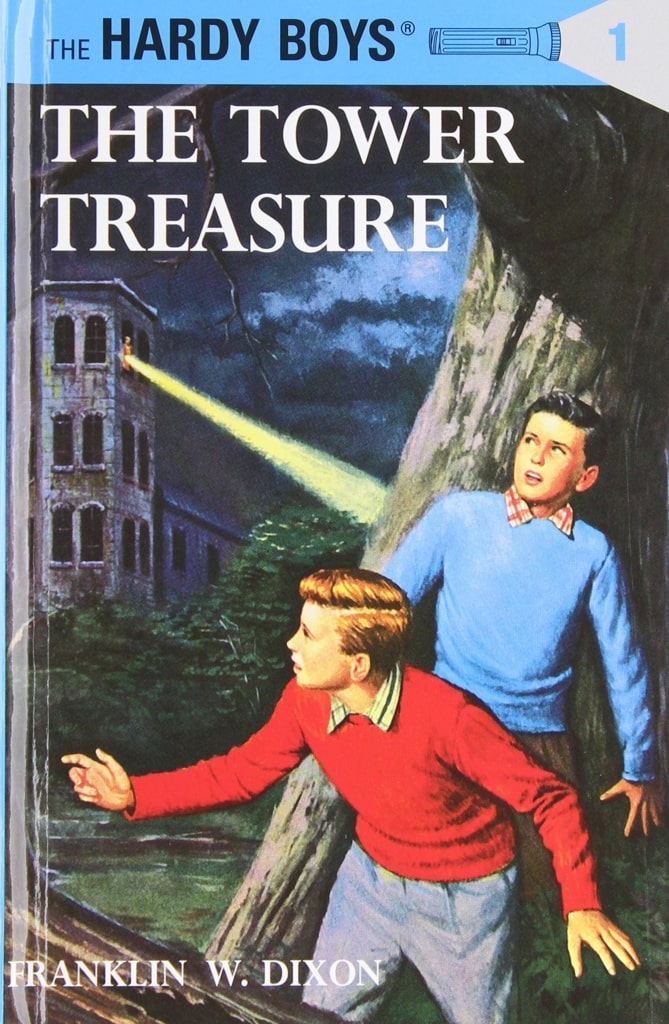
I soon finished #1 and began looking for another Hardy Boys novel to read. As it turned out, our school library had the whole collection (49 at the time) and I began to read them. Reading the Hardy Boys mysteries in bed at night was a great ending to each day. Reading by flashlight, seemed to intensify the spooky, scary adventures and mysteries in the books. After burning through a few flashlight batteries, I decided to rig a night light and extension cord for reading illumination. I continued the habit of reading in bed through my high school years. After I finished all the Hardy Boys, I started on the Ian Fleming, James Bond series. Reading those novels each night was a lot of fun and it fueled a love of reading that stayed with me to this day.
9 – AMF Roadmaster 20” Bicycle
I did a lot of walking when I was young. When I tell people that at age 6, I walked almost a mile home from school every day, they always give me a look as if I’m exaggerating. I’m not. My walk home from the 9th Avenue Elementary School to my Grandfather’s house next to the Wild Wood Cemetery measured 5002 feet (There are 5280 feet in a mile). Even more shocking to most modern parents, the majority of the walk was along Main Street, the most heavily traveled street in town. The schools provided crossing guards at the major intersections, and officially deputized, badge toting, patrol boys made sure you crossed in designated places.

That all changed on my seventh birthday. After badgering my parents for almost a year, they finally agreed I was ready for a real bicycle.

By that time, all my friends already had bicycles and were freely scooting around the back streets of town like a miniature version of Hell’s Angles. They were mobile in a way I could only imagine. It amazed me how they knew every back street “cut-through” and shortcut in town. When we played together, my cousin mercifully let me ride on the carrier over the rear fender of his bike so I could keep up with the gang.
The week of my birthday, my father took me to the basement of our local Western Auto hardware store to pick out the new machine. The basement of the store was filled with shiny new bikes. The proprietor pulled out the models he thought would fit me. After much consideration, we settled on an AMF Roadmaster 20” bike. It was very cool. It was candy apple red with white trim. My particular model had a carrier over the rear fender and a battery-powered headlight. I was ready to roll.
My father paid for the bike and we brought it home. My mother put a bow on it and it was to live in the living room until my birthday. I remember sneaking downstairs that first night to sleep under it.
I officially took possession a few days later on my birthday. There were only two problems. First, it was March in Pennsylvania, a cold month to be sure with copious amounts of rain and drizzle. Second, I didn’t know how to ride a two-wheeled bike. I could deal with the cold and rain, my parents, however, were more reluctant to teach me to ride the bicycle in the cold rain. So I anxiously waited for the weather to break.
After what seemed like a week, my mother finally agreed to teach me to ride my bicycle after school one day. She put me on the seat and my toes barely touched the ground. We had opted not to buy the optional training wheels as my father was sure I would be able to ride after some basic instruction. My mother was a good teacher. She told me to keep turning the handlebars back and forth slightly to counteract the feeling that you were going to fall and most importantly, keep peddling.
After a couple of minor falls, I was off. First 100 yards, then farther. After a few runs, I was ready to attempt a turn-a-round, not easy the first time on a narrow street. Once I got the hang of it, it all made sense.
I rode my bike every night after school until I could peddle at full speed anywhere and everywhere. My parents originally set my range limit to the end of the street. But as I got better, my range grew until I was riding across town to Pony League Baseball practice every night. At that point, the whole town was in my range. Distances that took thirty minutes to walk now took only minutes to travel. My whole world opened up. On weekends, I rode with my buddies all over town, nothing was out of range. The sense of freedom and control that little bike gave me is a feeling I’ll never forget.
10 – Greco Model GR 5 Acoustic Guitar
I was standing in the lunch line in the fifth grade when I overheard my two best buddies talking about something in hushed tones. Reluctantly, they told me about their plan to take guitar lessons from a nun at the Catholic Church, but she didn’t want a lot of students, so she asked them to keep it quiet.

In those days, in addition to going to Mass on Sunday, good Catholic boys went to Catechism (religious instruction) twice a week, on Tuesdays and Saturdays. In the mid-seventies, it was common for the Sisters that taught Catechism to play guitar. Nuns traveled from convent to convent a lot, and guitars were easy to bring along. One such Sister, Sister Monica Marie, played well and had agreed to give us basic guitar instruction. We all scrambled to get guitars.
My parents were both musical. My mother was an accomplished piano player and my father played trumpet well enough to attend college on a music scholarship. So I didn’t anticipate much resistance when I asked for an inexpensive guitar for guitar lessons. My assumption was correct and my mother agreed to purchase a guitar. Living in a rural area, my options were limited to one small music store that specialized in brass instruments, and mail-order catalogs. After some investigation, we decided on a Greco Model 5, steel-string, acoustic guitar, available in the Sears catalog. I believe the instrument costs less than $60 including shipping. We ordered the instrument and waited for delivery.
In about ten days, the instrument arrived while I was at school. When I came home, my mother was fooling around with it. She didn’t know how to tune it so nothing very musical was coming out. I had attended the first couple of guitar lessons without a guitar, but I did remember how to tune it. I did my best to tune the guitar and strummed the only chord I knew – C.
Compared to the other guitars the other kids were playing at the lessons, the Yugoslavian-made Greco Guitar was nice. It had a blond spruce top, and dark maple sides and back. It had a rosewood fingerboard and the “action” (the distance you had to choke the strings to touch a fret) was reasonable. The guitar was very playable and sounded decent.
After a few months of lessons, I became reasonably competent at playing the folk hymns Sister Monica was teaching us. Several of us rose to become the stars of our class and Sister Monica proposed forming a Folk Group to play at Mass on Sunday.
The Folk Group became a tremendous success. We played at the 10:00 AM mass each Sunday and that mass soon became the most popular mass at St. Tobias Church. We practiced together one evening each week and steadily improved in quality and repertoire. We added singers and soloists. Eventually, we even had a booklet printed with all the songs we knew so the congregation could join in. My buddies and I played in the Catholic Folk Group until we graduated high school and went to college. It was a lot of fun and it was a great experience performing in front of sometimes 300 people.
Another fun guitar experience occurred about a year after we began taking lessons. Our sixth-grade music teacher found out we could play guitar and asked us to accompany the sixth-grade chorus. Up to that point, I never thought about joining a chorus. But the sixth-grade chorus turned out to be quite fun. Our teacher was very cool and we accompanied the chorus on several numbers. The highlight of the year was a tour of all the schools. We traveled to four schools to play gigs.
The guitar eventually became a big part of my life. In addition to the Folk Group, I played in several rock bands and performed solo. I eventually upgraded my instrument from the Greco to an Ovation Acoustic and a Les Paul Electric guitar. But it was that first Greco guitar that initiated me to music. I played that guitar endlessly in my room. I purchased music books and took lessons from more accomplished players. I practiced until I could hold my own as a player and a singer.
Much like sports, playing an instrument teaches you the relationship between practice and results. The harder you work and the more you learn, the more accomplished you become. There is also a close relationship between music and science. Music theory is explained by the science of frequency. Tones reinforce each other due to their wavelength. Patterns emerge on keyboards and fingerboards that eventually make logical sense. Finally, you learn to trust your ear. If it sounds good, you’re doing the right thing.
11 – Chess
I first saw chess played in the 5th grade. My teacher, Mr. Waldek loved to play chess and bought an inexpensive board for the room. During study halls, he would routinely play the one student that knew how to play. I would frequently watch. One day, that student wasn’t at school and Mr. Waldek looked at me and beckoned me to come to his desk. “Would you like to learn chess?” he asked. “Absolutely,” I thought.

The game of chess experienced a renascence in the early seventies primarily due to the publicity of the 1972 World Chess Championship, America Bobby Fischer vs Soviet Boris Spassky. It was the height of the Cold War and the match had political implications. It was getting nightly news coverage. Suddenly, chess was cool.
In addition to being my 5th-grade teacher, Mr. Waldek was also one of the varsity football coaches. He was tall, physically fit, good-looking, and resembled Ron Ely, star of the Tarzan TV show. He was a “tough guy,” and all the boys idolized him. The point is, he made it seem cool for a tough, macho guy to play a thinking man’s game.
I began to play Mr. Waldek a lot during study hall. After a couple of months, we became fairly evenly matched. One of Mr. Walkek’s friends, the art teacher, Mr. Craw, also liked to play chess. As I was fairly good at art, Mr. Craw and I were already on good terms and also began to play chess during study halls.
Unlike other board games, there is no dice in chess. There is no element of chance. It is purely a skill game. Each player begins with the same resources. White, however, has the advantage of moving first. This is no small advantage and places white on the offensive until he makes a mistake. In high-level chess circles, white should always win or draw. Black moves second and is immediately on the defensive. Technically, against a grandmaster, the best black can hope for is a draw, unless white makes a mistake. This is why tournaments consist of many games. Each player has an equal opportunity to play black and white.
For a young boy, chess was a great equalizer. I had the same advantage as my six foot-two, college-educated, instructor. It was a rush and a feeling of real power. If you were good enough, you could force someone to take you seriously.
Chess soon became a passion of mine. I didn’t have a chess set at home, so I cut out chess pieces from a cardboard box and colored one side black, and the other side red. I then taught my sister to play using a checkerboard. My mother saw us playing and ask me to teach her. She took to the game immediately and soon she bought a real chessboard and began playing regularly with my aunts.
There was no internet then, so to learn chess tactics, you relied on other chess players and books. I read books on openings and strategy, but the book that had the most influence on me was Bobby Fischer’s 1966 book – “Bobby Fischer Teaches Chess”. After the initial “how-to” section of the book, it quickly became apparent how obsessed he was with “checkmate.” The entire remainder of the book presented problems on one page and the solution on the next page. The question was always “which move leads to checkmate.” This changed my thinking about the game. Instead of “pushing pieces” around, trying to gain a material advantage, I began to think of checkmate combinations on every move, whatever the cost in material. This was a turning point in my chess career and I’ve never forgotten it.
It amuses me how many people think chess is beyond them intellectually. I have been playing chess for over forty years now and I can tell you with certainty, the best chess players come from unlikely places. Never judge a potential player by the number of diplomas on his wall. In the chess world, it’s almost cliche that the most formally educated people usually aren’t the best chess players. In chess, abstract thinking trumps conventional thinking almost every time. I have beaten PHDs in minutes and been “taken down” by guys that did manual labor for a living. Many of the best chess players are “savant-like.” It’s a specific kind of intelligence, and you don’t know if you have it until you try. That’s one of the things chess teaches you. The spectrum of human intelligence is a continuum. Never underestimate any opponent.
12 – Davis Hi-Point Tennis Racket
I’ve always played sports. At age six, it was Pony League Baseball, then church League basketball finally organized football. Then about age 13, I discovered tennis.
Unlike all the team sports I’d played before, tennis was an individual sport. You didn’t have to wait for the coach to tell you it was OK to go into the game. You just needed a racket, some balls, and a friend that played. You could then play as much as you wanted. Nobody had to validate your skill. There were no team politics. No coach’s son could start in front of you. You could literally go as far as your talent would take you. Abiding by the rules and winning was all that mattered.
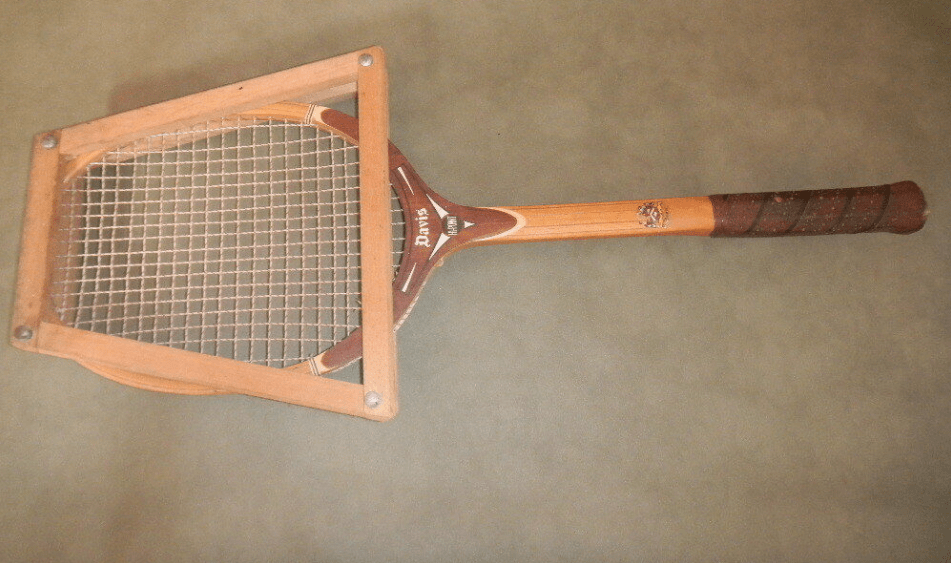
One of my best buddies had a court next to his house. He had a couple of old tennis rackets and we found a few balls in the weeds behind the court. We were in business.
At first, we had trouble just getting the ball back and forth across the net. But very quickly, we were playing games and sets. My buddy knew the rules and we played endlessly in the evenings and on weekends.
My father heard we were playing and gave me a Davis Hi-Point wooden racket he wasn’t using anymore. In those days, wooden rackets were the weapon of choice and many of the top players used them. The Davis Hi-Point was a lot better weapon than the old racket I had been using. My buddy then got a new Wilson T2000 (the same racket Jimmy Conners was using) for his birthday and our tennis level escalated.
At that time, tennis was experiencing a renaissance sparked by the 1973 Bobby Riggs, Billie Jean King, Battle of the Sexes Match in the Houston Astrodome. Up to that point, it was the biggest televised sporting event in history. There was also a cool crop of young pro tennis players including Jimmy Conners, Bjorn Borg, John McEnroe, Guillermo Vilas, Ilie Nastase, Arthur Ashe, Vitas Gerulaitis, Roscoe Tanner, and many others. These guys weren’t the typical “country club” set that had previously dominated the game. They were athletic, outspoken, good-looking, and cool. They roamed the world playing tournaments in luxurious resorts, dating beautiful women, giving irreverent interviews, and making lots of money. What teenage boy didn’t aspire to that?
Soon we weaseled our way into the local tennis culture. The best players in town met at the public courts every Saturday morning and played most of the day. Someone would always bring a cooler of soda and we’d form teams and play doubles all day.
One of the best tennis players in town, a physical education teacher, began to work with me. He taught me the “orthodox” way to hit topspin on my forehand and backhand. He taught me to hit volleys, overheads, and serves. My game steadily improved.
When I was a junior in high school, we convinced the athletic director to budget $500 to form a high school tennis team. He used $300 of the $500 to hire a coach, the other $200 went for balls and transportation expenses. He then contacted neighboring schools to put together a seven-match schedule. The team was a success as we went 5 wins and 2 team losses in our first season. I played #3 singles and #2 doubles.
Tennis was the first individual sport I competed in. There was no coach to push you. To progress, you really had to push yourself to practice, even on days when you didn’t want to. On the court, you were all alone. You won or lost all by yourself.
I continued to play tennis in college, earning the #2 single spot on my Penn State branch campus team. After graduation, I played in local leagues and tournaments. Tennis became an important part of my life and the Davis Hi-Point got me started.
13 – HO Railroad
My father was something of a renaissance man. He was a doctor by trade, but he also had an endless number of hobbies. He was good with his hands and he loved to build models. One of his passions was HO Railroading. HO railroading is the art of creating realistic train and railroad “layouts” at 1:87 scale (3.5 MM = 1 Foot). HO is the most popular scale model railroad in the world and has a cult-like following. The goal of serious model railroaders is to create layouts that are so realistic, at close range, it’s seriously hard to tell the difference between reality and the model. Ultimately, the best modelers are invited to Hollywood to work on special effects for feature films.
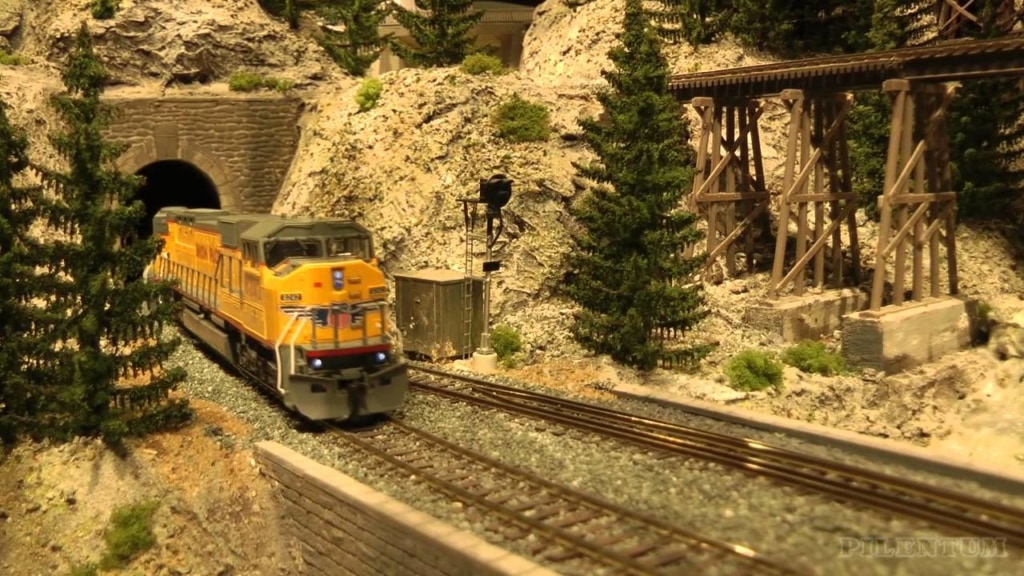
In the age of CGI (computer-generated images), it’s hard to recall how advanced model building had become. But virtually every film before the original Jurassic Park used models to achieve their special effects. Notable examples are 2001 a Space Odyssey, Star Trek, King Kong, Alien, and the first three Star Wars movies.
My father didn’t have the time to become that serious. But he did like to tinker with an eight-foot by four-foot layout in our basement. From the time I was old enough to see the top of the layout table, I was fascinated with the realism. My father’s layout was simple, just a figure eight with a large oval around the perimeter. The real beauty of his layout was the models, the landscaping, the tunnels, and the attention to detail that brought the layout to life. He had a collection of layout books that indicated plans for much more involved layouts. The next level of complexity involved multi-level layouts with sunken rivers, and multi-tiered levels of mountains and roadbeds. He didn’t have the time to bring those layouts to life, but as I got older, I did.
I eventually expanded the layout to five feet by ten feet. That doesn’t sound like a lot, but it’s a big deal at that scale. The larger layout allowed me to build the multi-level layout I had seen in my father’s book. My goal was to be able to operate three trains independently and simultaneously – a passenger train, a freight train, and an active rail yard to assemble trains.
I worked tirelessly for years on that layout. I built mountains out of paper mâché and I used natural materials for sand, coal, trees, rocks, and other landscape elements. I built models of rail stations, houses, coal tipples, and other structural elements to add realism to the layout.
Building the model railroad also necessitated an understanding of DC electric wiring. In order to control different sections of the track independently, you had to properly wire the layout and control it from a control center. Understanding the circuitry was imperative.
HO railroads are never finished. You keep moving from section to section improving big elements first, then focusing on smaller and smaller details ad infinitum. Working on the model railroad taught me scale modeling, attention to detail, and basic electrical theory. Today, anytime I see special effects on TV or at the movies, it reminds me of the hours spent obsessing over my HO railroad layout. To see a beautiful HO layout watch this.
14 – Revell Models
As mentioned above, my father loved models. One of my first memories of his modeling was a Korean War-era jet fighter built out of balsa and fabric hanging over my crib. I vividly remember it twirling overhead because I think I punched a few holes in the fuselage shortly after I was able to stand and reach it.
I began modeling in earnest around the second grade. At first, I built very simple tiny scale cars and planes. But very quickly, I graduated to larger-scale cars, ships, tanks, rockets, planes and various buildings for my HO railroad. It seems like every birthday and Christmas I received at least one model and my collection quickly grew.

Much like the HO railroad layout, building models was all about realism. At first, it was enough to simply glue the pieces together, then play with the result. But I soon began comparing my models to my friend’s models and a sort of competition began. One friend, in particular, had his father helping him and his models were very good. Wheels, turrets, and tracks turned freely, rough edges were filed off, cracks were filled, and decals were applied properly. But the biggest difference was the paint or lack thereof. Good modelers take great pains to paint their models properly. Many even buy airbrush sets so as to apply and blend paint for added realism. His models were always painted properly. I didn’t have the resources for an airbrush system, so I did the best I could with a brush and sometimes, aerosol spray paint.
I loved every category of model. Like great artists, I went through periods. My first period was “ships”. The Mayflower, Nautilus Submarine, The USS Arizona, and the Cutty Sark Clipper Ship were among the first of my seagoing collection. Then I moved on to cars, rockets, the human body, and of course, HO buildings for my layout. But my favorite models were of military hardware, especially tanks and aircraft. I made it my mission to build all the principal tanks and aircraft from World War II. I never did finish my collection but by the time I was a senior in high school, I did fall asleep each night gazing up at a P-51 Mustang, a P-38 Lockheed Lightning, a P-47 Republic Thunderbolt, a Vought F4U Corsair, a German FW-190, and my favorite of all, the first jet fighter, a German Me-262 Swallow. All were hung from my bedroom ceiling with fishing line. To get an idea of what’s involved, watch the video building a P-51 Mustang here.
Building models teach you a lot about the nature of machinery. The way things are put together in real life begins to make sense. You learn how one piece relates to another. From a historical standpoint, there’s nothing like touching history to make an indelible impression.
For our senior class trip, we went to Washington DC, and the Smithsonian Air and Space Museum. All the aircraft I had worked so diligently on were parked or hanging from the ceiling. On one floor of the museum, I walked around the corner, and there it was, one of the last remaining Me-262 jet fighters in existence. I stood in awe gazing at the aircraft. The rush of emotion almost brought tears to my eyes.
15 – Avalon Hill Military History Games
One of my best friends called me the week after my 14th Christmas and excitedly proclaimed, “You’ve got to come and play this game. It’s fantastic.” He was excited about a game he received for Christmas and cajoled me into coming to his house to play. I thought twice about walking a mile through the Pennsylvania cold and snow to play a board game. But his excitement was contagious and I agreed.
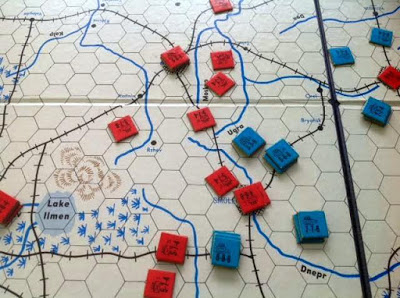
He was right. The game was Avalon Hill’s Stalingrad and it was like no other game I’d ever played. The game board was a large map of Eastern Europe and Russia. It featured rivers, swamps, and railroads, and was covered by a pattern of hexagons, or “hexes”. There were a lot of tiny square cardboard pieces or “counters.” Each counter represented an actual Russian or German unit that participated in Operation Barbarossa, the German invasion of Russia in the Second World War. Each counter was labeled with symbols indicating infantry or armor and had numbers indicating its movement factor, attack factor, and defense factor. Each unit could move each turn as many “hexes” as its movement factor indicated. You got bonus moves along railroads. Your movement decreased in swamps, mountains, or bad weather. When you moved next to an opposing unit, you compared your attack factor to his defense factor, calculated the odds, and rolled a single die to determine the outcome.
The game was basically like chess in that very little luck was involved. The situation was the same as the Germans and Russians faced in June 1941. The game was turn-based with the Germans moving first. The Germans had to capture Moscow, Leningrad, and Stalingrad in a given amount of time and hold them for two turns. The Russian won if he prevented you from doing that.
Everyone knows what happened in the real Operation Barbarossa, the Germans got within a few miles of Moscow and were pushed back, and the next year they focused most of their forces on Stalingrad and were stopped, surrounded, and destroyed. The remainder of the campaign was basically a retreat back to Germany.
The challenge of Avalon Hill Stalingrad is to do what the Germans couldn’t do, succeed. It’s not easy to do and the game has an uncanny way of reproducing the same exact results as the actual campaign.
We played a lot of Stalingrad that winter. One of us would move, then watch TV while the other would move. One move, in particular, I remember, took forty-five minutes to complete. Our games would often last several days.
After mastering Stalingrad, we moved on to other campaigns including Africa Korps, Gettysburg, France 1940, D-Day, Panzer Blitz, Luftwaffe, and many others. Each game brought the campaigns to life in a way that history books or documentaries could never completely communicate. You were the general, you knew what happened, and your challenge was to change the historical results. It was great fun and gave me an appreciation of military history I’ve never forgotten.



